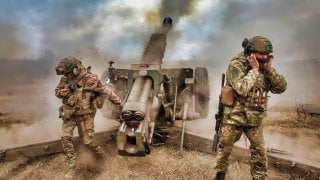ATACMS Strikes Is a Nightmare for Russia in Ukraine War
While it is still way too early to assess the impact of this move on the conflict’s overall dynamics, the Kremlin’s reaction has revealed its concerns about the possible developments.
The authorization of Ukrainian strikes into the territory of the Russian Federation with ATACMS missiles is a decision Kyiv has been waiting on for months. While it is still way too early to assess the impact of this move on the conflict’s overall dynamics, the Kremlin’s reaction has revealed its concerns about the possible developments.
While Ukraine manages to sustain its Kursk offensive, its standing on the eastern front seems to worsen. Russia gained more land in October than any month in the past two years. Along with Russia’s large-scale drone and missile strikes, Ukraine’s arms and ammunition shortages and increasingly challenging mobilization of new military personnel put Ukraine in a worse negotiating position with the prospect of a possible ceasefire.
A ceasefire seems more probable than before November 9, 2024, given Donald Trump’s campaign promises to strike a peace deal. Yet precise Ukrainian use of ATACMS fire could potentially curb this negative trend by depriving Russia of some amounts of its own arms, ammunition, or fuel stored in the neighboring regions, which is evidently intended to be used against Ukraine.
Keeping the Ukrainian Armed Forces standing against Russian aggression without being outgunned until Trump takes office might have been a point in the Biden administration’s considerations.
Ukraine must certainly avoid deliberate attacks on non-military targets and minimize the risk of causing damage to civilians. Such an assault would be a massive opportunity for Russian propaganda to try to blur the line between the aggressor and the victim of aggression. And what is even worse, one could easily visualize Russian false flag operations posing as brutal Ukrainian strikes against civilians.
Hence, when firing ATACMS against Russia, Ukraine would be best served by strictly observing international humanitarian law.
Russia has just updated its declared nuclear posture to lower its threshold of the possible use of such weapons. The amendments harmonize with continuous threats from Russian political and media figures who underline the risk of nuclear escalation.
Throughout the war in Ukraine, however, Russia’s red lines have been frequently tested and redefined. The Russian 2020 nuclear posture assumed four possible scenarios to occur, which may trigger nuclear retaliation. Missile fire upon Russian territory was one of these. But it is important to note that this already happened multiple times, both in the “annexed” territories, where Moscow illegally claims Crimea and four regions of Ukraine as its own, and locations that are internationally recognized as Russian territory.
Another Russian red line that has been violated was a prohibition against providing any military assistance to Ukraine. But supplies of increasingly advanced and lethal weapons, including different kinds of missiles and anti-missile systems, fighter jets, and tanks, arrived in Ukraine without Russian nuclear escalation.
Although the Kremlin constantly tries to lower the threshold for using nuclear weapons—both rhetorically and officially by updating its nuclear posture—there have been no indications that Russia is preparing to use a nuclear weapon.
Apart from Russian provocations below the threshold of war, the West sleeps peacefully while Ukrainians face increasing assaults from Russia. The difference between Russia’s threatening narratives and its more restrained actions could be explained by referring to the Russian holistic understanding of strategic deterrence, which includes not only robust military capabilities—with nuclear weapons as the ultimate one—but also a wide array of non-military, political, diplomatic, and information-related means.
Therefore, the course of the war in Ukraine proves that Russia’s nuclear threats are meant mostly as a deterrent.
About the Author:
Piotr Śledź is an assistant professor at the University of Warsaw (Department of Strategic Studies and International Security, Faculty of Political Science and International Studies). His research concerns armed conflicts, arms control, the defense industry, and the EU’s Common Security and Defense Policy.
Image Credit: Creative Commons and/or Shutterstock.

